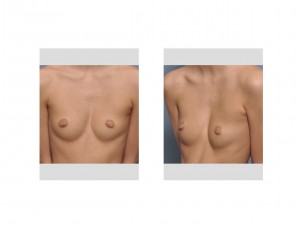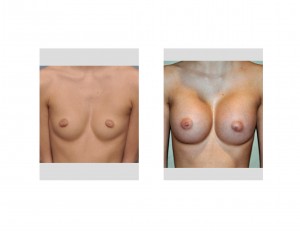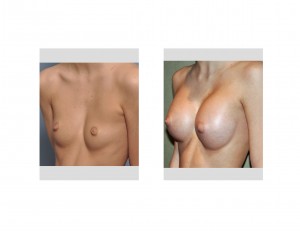Background: The shape of the breasts is partially influenced by the anatomy of the underlying chest wall and rib cage. The bony ribs and sternum serve as the platform of support for the soft tissue of the breast mound. Asymmetries in the chest wall, therefore, will create overlying asymmetry and shape issues in the overlying breasts.
Congenital defects of the sternum, known as pectus deformities, affect how the two sides of the rib cage meet in the middle. Rather than creating a flat sternum, pectus deformities can occur from an inward sternal depression (excavatum) or an outward protrusion. (carinatum) Pectus excavatum is more common and often appears in less severe forms that either does not merit surgical correction or the patient did not desire it. As the sternum is pushed inward, the breast mounds rotate inward as well.
In small-chested women who present for breast augmentation with some degree of pectus excavatum, usually very young women, the small size of the breasts diminishes the external appearance of the deformity. But careful examination will show that the breast mound has an inward tilt and the nipple may be slightly deviated inward. Often times the measured distance between the midline of the sternum to the nipple is shorter on the more affected side if there is one.
A pertinent question in pectus excavatum is whether the placement of breast implants will magnify these breast manifestations, particularly if the pectus affects just one side and there is significant asymmetry.



Case Highlights:
1) Sternal abnormalities are well known chest wall deformties with pectus excavatum in varying degrees being the most common.
2) With pectus excavatum, the chest wall and breast base angles inward, changing the orientation of the breast mound.
3) While breast implants increase breast size and do not alter the shape of the underlying chest wall, breast augmentation in women with untreated pectus excavatum usually improves the shape of the breast adding volume, improved symmetry and noticeable cleavage.
Dr. Barry Eppley
Indianapolis, Indiana


